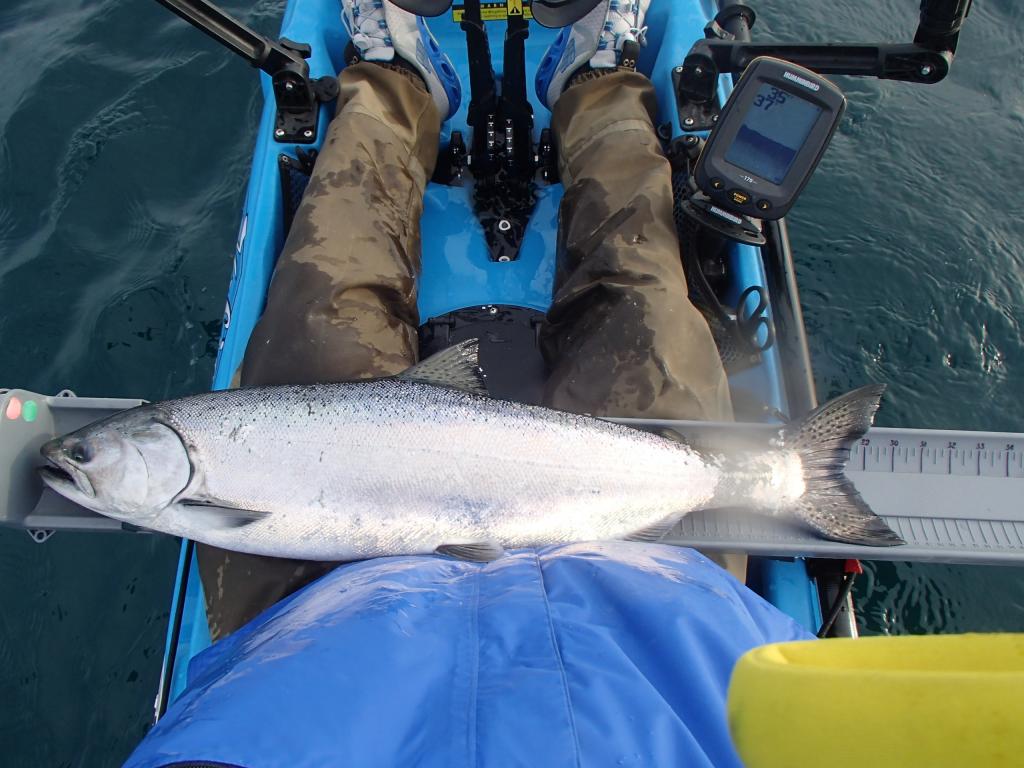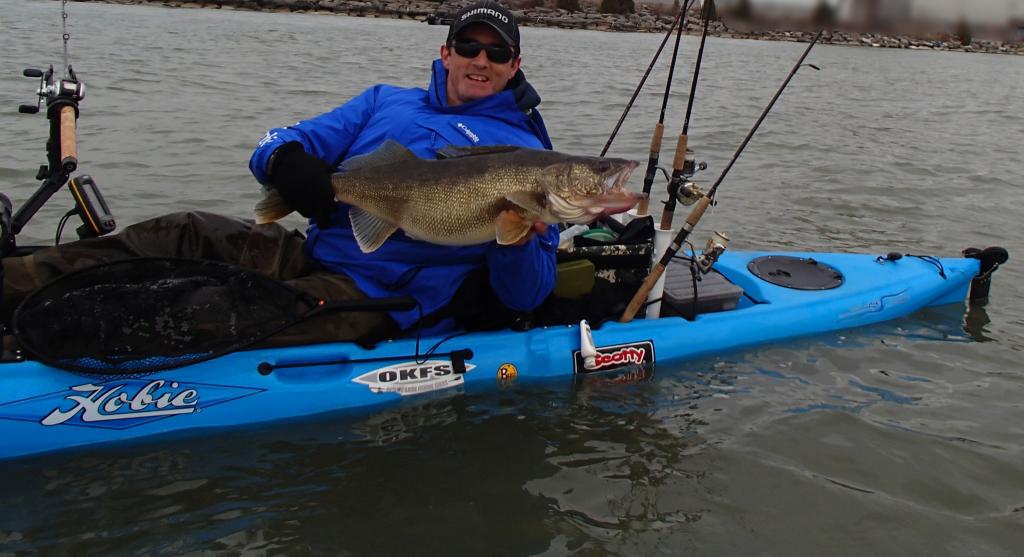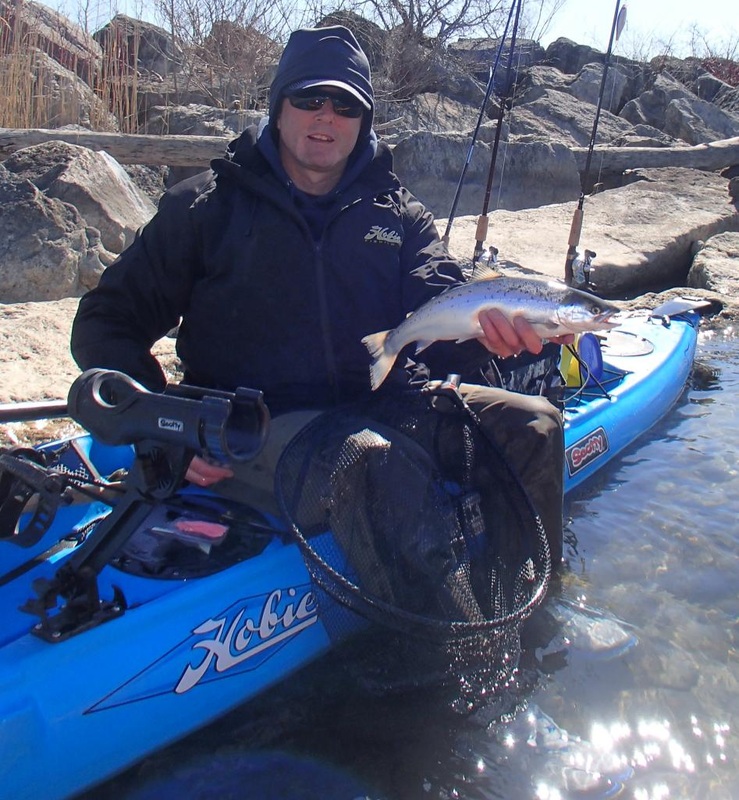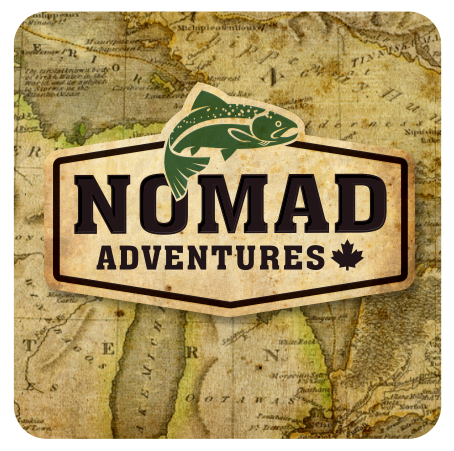|
By Howard Meyerson
GRAND RAPIDS, MI – Atlantic salmon will again be stocked at four Lake Huron locations in 2014. State officials are gearing up for the second round in a five-year experiment to determine if an Atlantic salmon fishery can be created there. Approximately 100,000 yearling Atlantics were planted in the lake during the spring of 2013, but none appeared in the catch so far, according to state fisheries officials. “We expect that all that to start rolling next summer,” said Todd Grischke, the Lake Huron basin coordinator for the Michigan DNR. “A lot can happen between now and then, but we will be evaluating the harvest each of the next two seasons and weaving that information into a long-term plan of where to go. “Next year we are looking at stocking 130,000 yearlings. And, if all goes well, we will look at a 150,000 more in 2015 and stick to the same study design.” Atlantic salmon may help fill the fisheries gap that was created in Lake Huron when Chinook salmon population collapsed in 2003 and 2004. Grischke and others are hopeful that they will fare better being a more opportunistic feeder. Chinook salmon rely on alewives which virtually disappeared. Atlantics are also thought a good compliment to the multi-species fishery that is developing in Lake Huron now. Walleye, steelhead, perch and some Chinooks are all being caught. STOCKING TO INCREASE OVER NEXT TWO YEARS The 2014 plan calls for increasing Atlantic stocking at each of the four locales that got them this year. The St. Mary’s River will get 50,000 yearlings in 2014, up from 35,000. Alpena/Thunder Bay will get 25,000 instead of 20,000, and the Au Sable River will get 35,000, up from 30,000. Lexington will get 20,000 rather than 15,000. “I’m really excited about it,” said Frank Krist, an avid angler from Rogers City and the chairman of the Lake Huron Citizen’s Advisory Committee, a group of anglers convened by the DNR for discussion and review. The group recently reviewed the plan. “The fish stocked this (past) spring will be big enough to be caught in the 2014 spring fishery,” Krist said. “And next fall about 30 to 50 percent of those fish will be mature enough to return to the stocking sites to spawn.” Last spring we had the pleasure of guiding Sportsman360 TV host Owen Nolan and his guest co-host former NHLer Chris Simon for steelhead in Southern Ontario. It was the worst weather we had ever fished in let alone guide anyone! Things turned out very good, and the show will be airing for the first time tomorrow, and running all week long. Sportsman360TV: Ontario Steelhead - WildTV(Ch 393) Tues 7:30pm, Thurs 4:30pm, Fri 3:30pm World Fishing Network(Ch 426) Tues 10pm, Wed 1pm, Sat 1pm Will post the video in its entirety when it is released. Have a look if you get either of those channels. Here is the trailer Hope you enjoy! An interesting perspective on the Lake Huron salmon fishery from nearly four years ago, reads fairly accurately in consideration of what is happening today. Not 100% in agreement with what is going on with Lake Huron salmon is widespread. Some areas appear to be making a comeback in the Ontario region at least. Coho's, Pinks, Chinook, and yes even some Atlantics have shown up in recent years... thanks LSSU! Not big numbers or size by any means but a welcome sight nonetheless. Collapse of Lake Huron salmon fishery offers lessons
Jeff Alexander | Muskegon Chronicle By Jeff Alexander | Muskegon Chronicle Follow on Twitter on April 19, 2011 at 12:00 PM The Great Lakes provide an important food source for the region and the country. As such, the productivity of the lakes depends on a variety of human and environmental factors. The food web and interlocking food chains in the lakes are complex and ever-changing. In the mid-1990s, when disease ravaged the Lake Michigan chinook salmon fishery, anglers flocked to Lake Huron . The glory days of Lake Huron’s salmon fishery lasted roughly a decade, until a combination of factors — all driven by human activities — caused the salmon population to crash in 2003-04. It has not recovered. Michigan anglers who fished out of 10 Lake Huron ports last year caught 3,200 chinook salmon, a record low. That was a 95 percent drop from the average annual catch of 75,000 at those same ports between 1986 and 2003, according to state data. “Last year ... about as low as it could get,” said Jim Johnson, a research biologist for the Michigan Department of Natural Resources. Lake Huron’s salmon crisis is a cautionary tale for Lake Michigan’s still-thriving salmon fishery: The lakes share many of the environmental factors that caused Lake Huron’s salmon fishery to collapse. Huge numbers of foreign quagga mussels are wreaking havoc on the food chain in both lakes. The number of prey fish, the small fish that salmon and other large fish eat, has plummeted in recent years. The fall of Lake Huron’s chinook population was quick, dramatic and painful — for the fish, anglers and coastal communities that reaped millions of dollars in economic benefits from the fishery. Authors: Parsons, John W.
Publication Year: 1973 Book or Record Title: History of salmon in the Great Lakes, 1850-1970 Extent of Work: 80 Series Title: U. S. Bureau of Sport Fisheries and Wildlife Technical paper no. 68 Abstract: This history of the salmon in the Great Lakes describes the decline and extinction of the Atlantic salmon (Salmo salar) in Lake Ontario in the 1800's; the failure to establish, by salmon culture, permanent or sizable populations of Atlantic or Pacific salmon in any of the Great Lakes in 1867-1965; and the success of the plantings of coho (Oncorhynchus kisutch) and chinook salmon (O. tshawytsha) in the Great Lakes, in 1966-70 -- particularly in Lake Michigan. Despite plantings of 5 million fry and fingerlings from Lake Ontario stocks in 1866-84, the native Atlantic salmon in Lake Ontario became extinct in the late 1800's primarily because tributaries in which they spawned were blocked by mill dams. Plantings of 13 million chinook salmon and landlocked and anadromous forms of Atlantic salmon in Lake Ontario and the other Great Lakes in 1873-1947 failed completely. The first species to develop a self-sustaining population was the pink salmon (O. gorbuscha), which was planted in Lake Superior in 1956; however, it has not become abundant. A salmon fishery finally was established when 15 million coho salmon and 6 million chinook salmon were planted as smolt in the Great Lakes in 1966-70. In 1970, for example, 576, 000 coho salmon (12% of those planted in 1969) were caught by anglers in Lake Michigan. Most weighed 5 to 10 pounds (2.3-4.5 kg). Sport fishing for salmon was fair in Lakes Superior and Huron, and poor in Lakes Erie and Ontario. By 1970, natural reproduction of coho, chinook, pink, and kokanee (O. nerka) salmon had occurred in some tributaries of one or more of the upper three Great Lakes. It is expected, however, that the sport fishery will continue to be supported almost entirely by planted fish. Lake Huron Spring Chinook SalmonJeff Wall | Nomad Adventures [email protected] The groundhog said six more weeks of winter from Feb 2.... he was wrong! It has been a lot of years, close to 20 since I was able to put some decent time in on the spring Great Lakes fishery. April is normally our second busiest month for river guiding, but the winter that wouldn't go away gave us some time for personal fishing. Canadian kayak fishing guide Jeff Wall showcases his spring catch. Over 40 fish caught in six outings last spring. All were salmon or trout except one giant out of season walleye. Steelhead, Coho Salmon, Brown Trout, Chinook Salmon, Atlantic Salmon, Walleye, Lake Trout were all caught and released over six separate days of fishing. Long lining shallow crankbaits on light lines pretty much sums up the spring kayak fishing in Ontario for the Great Lakes region. We employed a variety of minnow baits, smaller spoons, and kwikfish style lures. Slow trolling with abrupt direction changes were the ticket in the open water trolling but crashing two lures thru the baitfish schools got us several doubles. I don't have to tell you how exciting that is in a kayak! Please always consider best practices when heading out on the Great Lakes, especially when it is still winter. Better yet, hire a guide! Be sure to look up Nomad Adventures for your next spring kayak fishing trip. Hope you enjoy! Giant Lake Ontario WalleyeLake Ontario Atlantic Salmon |
FISHING NEWS ONTARIOOntario and Great Lakes region salmon, steelhead, and migratory trout fishing articles, information, news, and reports. Stay up to date on our most recent trips, events, tournaments, and general news on adventure fishing and kayak fishing in Ontario and Canada. Archives
April 2021
Categories
All
Links |






 RSS Feed
RSS Feed